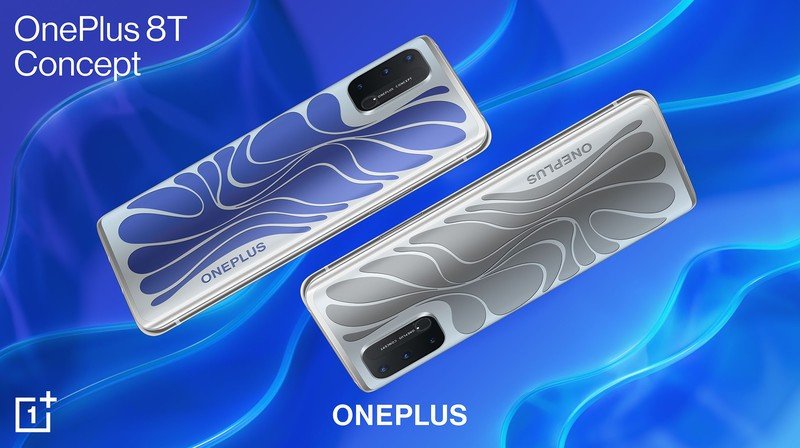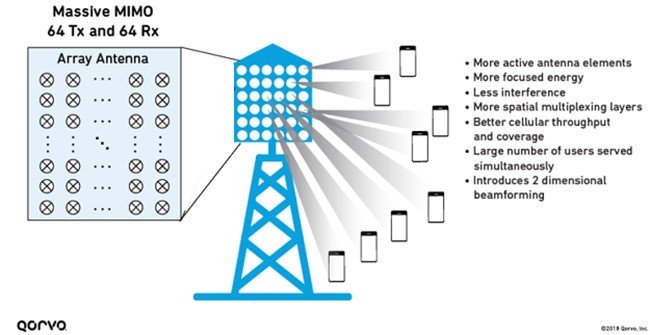mmWave is incredible, especially when it's not used in 5G phones

There is a lot of talk about how mmWave (millimeter-wave) radio spectrum is the future of 5G cellular networks and how it's a must-have if you want the best Android phone — at least on Verizon. But mmWave signals and spectrum isn't something new and it's not something specifically designed for use in broadband carrier networks; it just happens to do a fair job there, too.
Because of the way signals are carried across the mmWave bands, there are plenty of other uses in practical consumer electronics, industrial and military applications, and even some pie-in-the-sky municipal networking systems that we'll never see because of the costs associated with building them out. Remember Wi-Max?
What is mmWave exactly?

It's common to see articles written about mmWave that don't tell you how or why it works, or at best just give a general idea instead of explaining it. I know I'm guilty of writing some myself.
mmWave is a specific area of the radio frequency spectrum that covers all frequencies between 24GHz and 100GHz. This spectrum is mostly unused because it does cause some difficulties when used in any sort of large network. We'll get to those later.
mmWave can move a lot of data very quickly across a fairly short distance.
What mmWave frequencies offer is the ability to transfer a lot of data over a relatively short distance. This is why the current mmWave 5G rollouts have such spotty coverage — it's super fast as long as you're close to the cell site you're connecting to. mmWave is bad for transmission between cell towers along a deserted highway. mmWave is excellent for blanketing something like a football stadium during the Super Bowl (GO BUCS!)
I mentioned propagation problems with mmWave, and there are more than a few. These usually don't get mentioned much because big players in mmWave 5G like Qualcomm have figured out ways around them. The biggest issues are path loss, diffraction and blockage, rain attenuation, atmospheric absorption, and foliage loss behaviors.
mmWave signals are easily blocked by things like rain or tree leaves. It's a trade-off.
Those are all fancy words that mean mmWave signals don't do a great job passing through things or traveling very far. Rain, leaves, a car, or even your body can cause interference and loss of signal. Another inherent property of mmWave that chipmakers are using to combat these issues is how receptive mmWave signals are to what's called beamforming. That's when antennas on both ends are placed so refracted and blocked signals are actually bounced around objects.
Get the latest news from Android Central, your trusted companion in the world of Android
For example — a signal can't penetrate a concrete wall very well, but it can bounce itself on that wall in plenty of directions, and if the antenna sending and receiving it are placed just right you can move a signal around a tree trunk. That's why 5G engineers need to be so smart and why mmWave is the future of 5G in every place with plenty of people in a small area. Superfast signals that carry a ton of data and can bounce off the wall and towards your phone sounds pretty good.
Reflection vs. absorption
There are about a million technical white papers published on the internet that discuss how the absorption of specific radio waves and the reflection of others can be used. They're all enlightening and if you just dig this sort of thing it's worthwhile to go down a Google rabbit hole and read some. For everybody else, there is one simple example — a scanner that can detect a gun.
mmWave frequencies can reflect back to the source at a very high resolution and do it much better than X-rays can.
This works because some mmWave frequencies can pass through things like your pants or your shoes or even most laptop bags but will reflect off plenty of other things. There is technology already developed that can take those reflections and focus them into an image with a resolution of less than 10mm, actively (imagine standing in an airport scanner) or passively (you walk past a scanner as you enter a courthouse or post office). At such a tiny resolution difference, it's simple to see what any foreign object is being concealed because you have an excellent photo of it. While mmWave can't tell someone it is seeing a gun, it can show someone a photo of a concealed gun.
Most of us aren't going to be carrying concealed contraband or working in a job that has us looking for it. But the concept for other applications is the same. Really.

OnePlus made an amazing concept device that uses mmWave technology to notice the movement of your chest and air passages, then used this data to monitor your breathing through a color-changing paint job on a phone we'll never get to buy but all want to see.
All these ideas use the same properties of reflection, refraction, and absorption that are inherent to mmWave signals.
It's rumored that we'll see a Google Nest Hub that uses Soli for sleep tracking or remote gestures or whatever else Google can cook up. Soli is cool, don't get me wrong, but mmWave could work here just as well and also be used as part of your home Wi-Fi.
These two ideas would use mmWave's reflection and absorption specifics to do something that's both technically simple and practically amazing. Now expand those ideas into things like smartwatches that pleasure heartbeats or blood oxygen, or a step counter that actually works 100% correctly 100% of the time. Or technology that monitors sleep apnea or congestive heart failure.

If you want to get super ambitious, mmWave can be used as a type of mesh system for a Massive MIMO-Based network fronthaul. Right now this is all done using sub-6 networking and it's pretty good at keeping things connected where a lot of users are in a specific area. mmWave expands the speed to each user and can mesh "better" so it also can expand the area. We'll see this tech in places like New York because so many people live there, or Washington, D.C. because so many people visit a very small part of the city at the same time. OK, I guess this one doesn't count because it's technically part of a 5G cellular system, but it's too cool not to include.
Verizon's mmWave network is still rolling out — here's all the 5G cities it's located in — and you can expect similar trajectories from AT&T, T-Mobile and many other carriers around the world to follow suit in the next few years. But what's interesting about millimeter-wave airwaves is exactly that — it's just plain cool.

Jerry is an amateur woodworker and struggling shade tree mechanic. There's nothing he can't take apart, but many things he can't reassemble. You'll find him writing and speaking his loud opinion on Android Central and occasionally on Threads.
